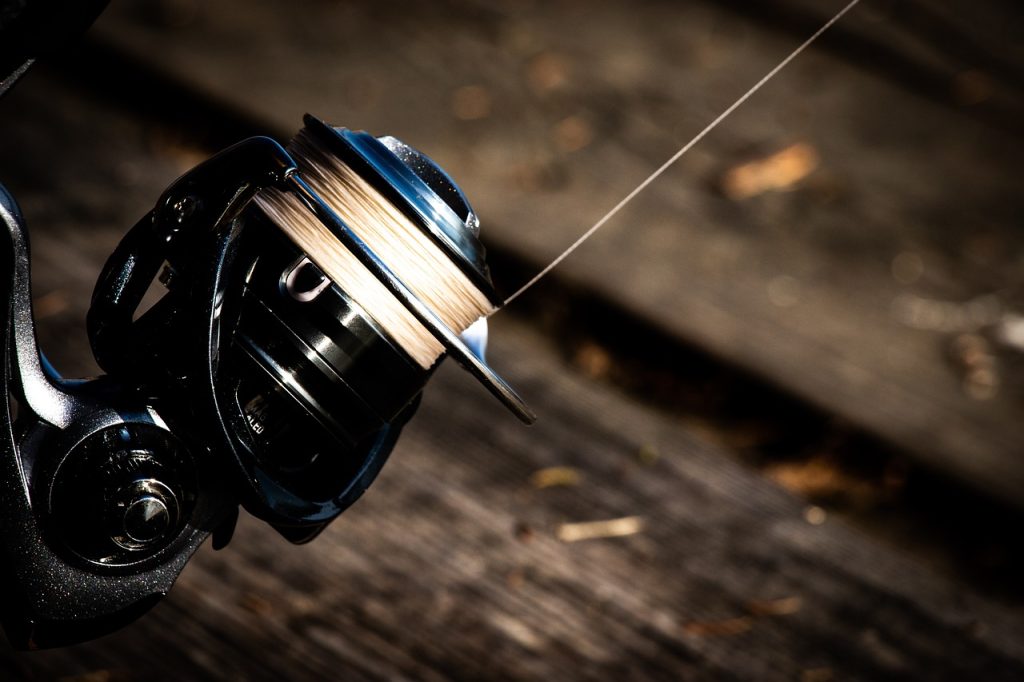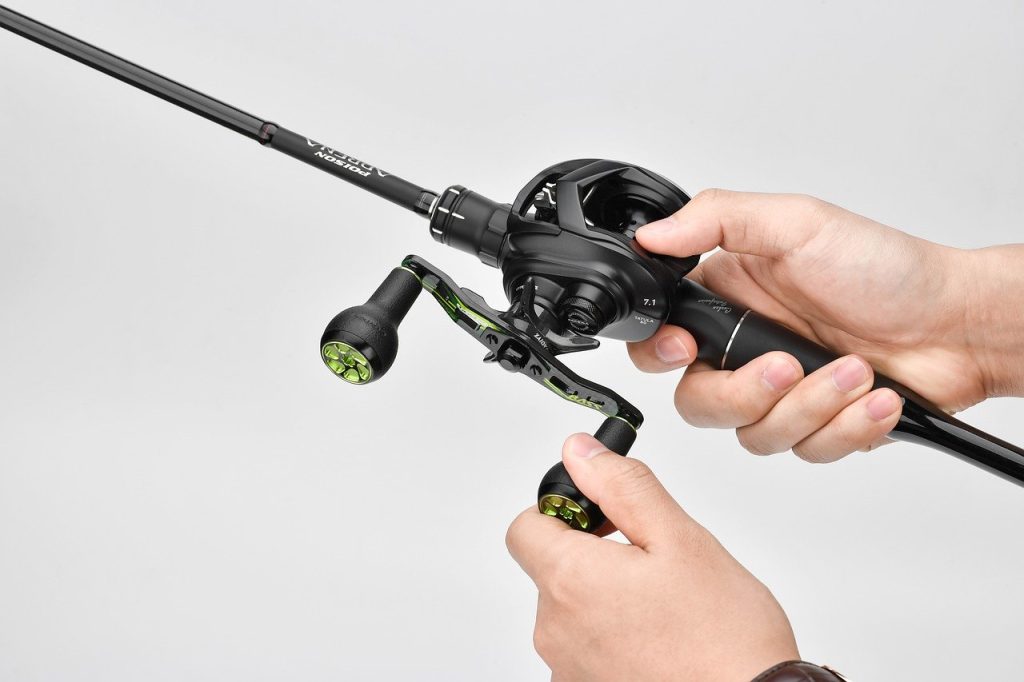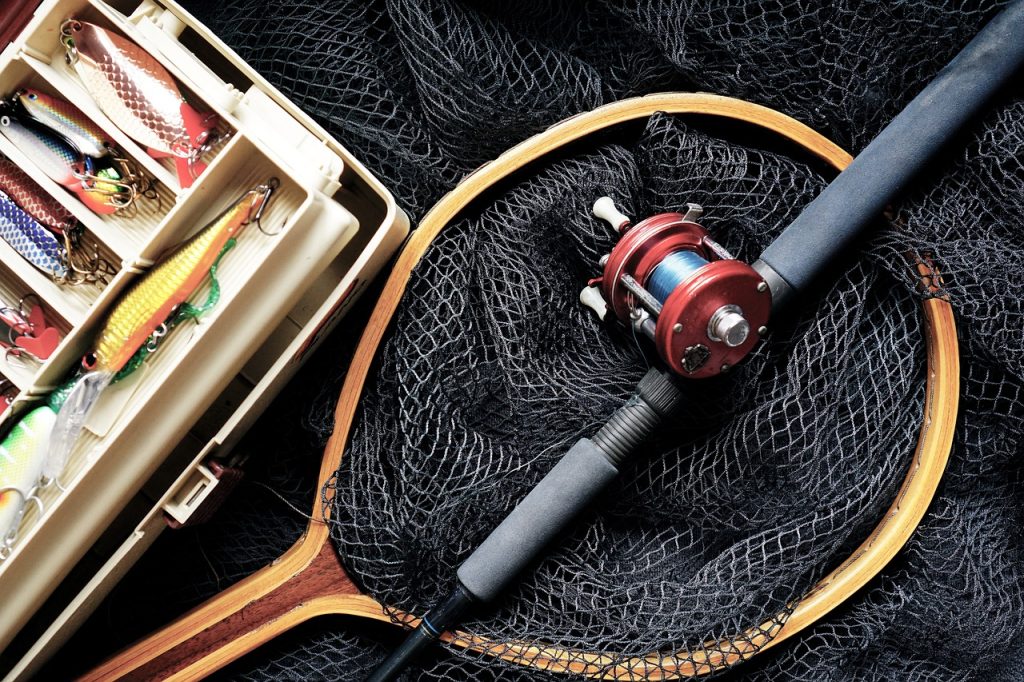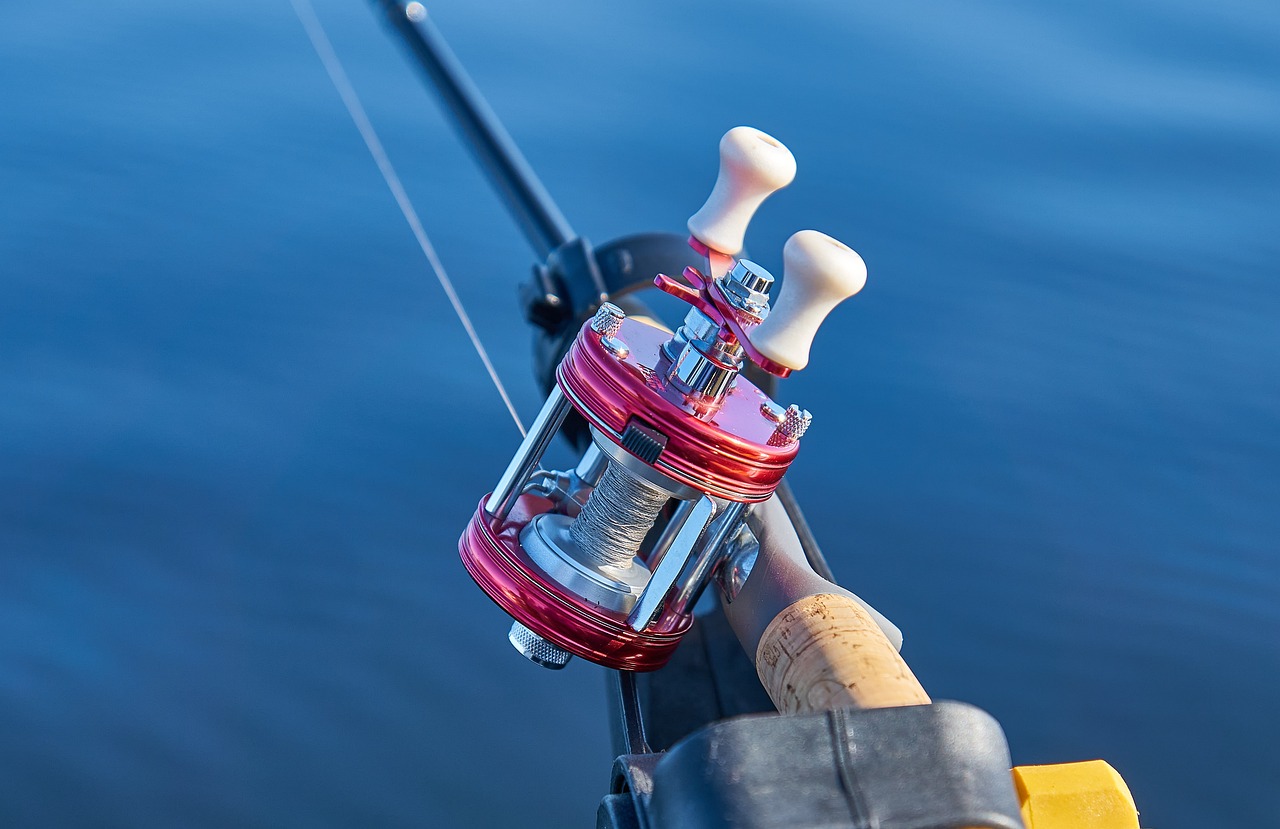Choosing the perfect fishing rod might mean the difference between success and enjoyment. In this article, we’ll look at the fundamental distinctions of spinning rods, so you can decide which is ideal for your fishing needs. Spinning rods, noted for their ease of use and adaptability, are great for beginners and lighter lures since they provide smooth casting and control.
What is a Fishing Rod?
A fishing rod is an indispensable gear for anglers, designed to improve your fishing experience by giving control and accuracy. Its primary aim is to increase your reach, allowing you to cast and retrieve bait or lures more successfully. The construction of a spinning or casting rod has a significant impact on its performance.

Spinning Rod: Features and Benefits
What is a spinning rod?
A spinning rod is a popular choice among anglers because of its simple design and versatility. It includes a spinning reel, which hangs below the rod and enables seamless line release and retrieval. The spinning rod is made of a flexible, tapered shaft and a system of guides that direct the line from the reel to the tip.
This design reduces line tangling and assures proper casting. A spinning rod’s open-faced reel is easy for beginners to learn and handle, and its design allows for a variety of fishing approaches. In comparison to casting rods, which have the reel on top and need a more precise casting technique, spinning rods are often easier to use.
Key elements
Handle: The handle is where you grip the rod and is typically constructed of cork or EVA foam for comfort and control.
Reel Seat: The Reel Seat connects the reel to the rod, keeping it in place during casting and recovery.
Guides: These are the little rings on the rod that help route the fishing line from the reel to the tip.
Tip: The tip is the thin, flexible end of the rod that is responsible for sensitivity and bite detection.
Understanding these components allows you to pick between a spinning and casting rod depending on your unique fishing requirements and preferences.

Advantages of Spinning Rod:
Beginners will find spinning rods especially easy to use. The spinning reel’s open design enables a smoother casting experience with less backlash, making it easier for new anglers to grasp the fundamentals of fishing. This makes a spinning rod and reel combo a good choice for beginners.
Spinning rods are quite versatile and can be used for a variety of fishing approaches. Whether you’re casting for trout in a freshwater lake or targeting saltwater species, spinning rods can handle a wide range of lures and bait effectively. Their flexibility allows them to be employed for everything from small panfish to medium-sized game fish.
Capacity to Handle Lighter Lures and Lines: One of the most notable characteristics of spinning rods is the capacity to handle lighter lures and lines. This makes them suitable for circumstances requiring precision and care, such as fishing for smaller species or delivering a delicate presentation. A medium-heavy spinning rod, for example, can handle a wide range of lure weights, making it an adaptable complement to your gear.
Choosing the Right Spinning Rod
Choosing the right spinning rod could significantly enhance your fishing experience. Whether you’re just starting or seeking to upgrade your equipment, recognizing the essential criteria and selecting the best spinning rod for your needs is critical.

Factors to Consider a Spinning Rod
When selecting a spinning rod, there are several crucial variables to consider.
Rod Length: The length of your spinning rod determines casting distance and accuracy. Longer rods usually cast farther and have more leverage, making them suitable for surf or distance fishing. Shorter rods, on the other hand, provide greater control and are better suited to fishing in compact spaces such as streams or ponds. In general, a rod length of 6 to 7 feet is adaptable.
Rod Power: Rod power relates to a rod’s strength and capacity to handle various fish sizes. It is classified as ultralight, light, medium-heavy, or heavy. A medium-heavy spinning rod is ideal for handling larger fish and heavier lures, whilst ultralight rods are best for little fish and finesse tactics. Choose the rod power based on the fish you’re after and the conditions you’ll be fishing in.
Rod Action: Rod action is the way the rod flexes when force is put upon it. Fast-action rods bend at the tip and are ideal for precise casting and detecting bites. Moderate and slow action rods bend more throughout their length and are better suited to larger lures and baits, providing greater flexibility and hook-setting force.

Recommendations For Various Fishing Needs
Choosing the proper spinning rod is determined by your specific fishing needs and conditions. Here are some leading models and features to consider:
For beginners: If you’re new to fishing, a spinning rod and reel combo is a convenient and affordable option. Look for a rod that is easy to use and versatile. The Shimano Sedona Spinning Rod is an excellent choice for beginners due to its combination of durability and price. It’s suitable for a wide range of fishing tactics and conditions.
Freshwater fishing: A medium-power spinning rod is perfect for catching bass, trout, and panfish. The St. Croix Triumph Spinning Rod is highly recommended because of its sensitivity and robustness, making it ideal for freshwater fishing. Its medium power and moderate motion make it suitable for use with a variety of freshwater species.
For Saltwater Fishing: If you plan to fish in saltwater, make sure your rod is designed to endure the tough conditions. The Penn Battle II Spinning Rod is an excellent choice for sea anglers. Its strong design and corrosion-resistant components make it suitable for saltwater conditions, and its high power rating enables it to handle larger saltwater species.

For Light Tackle Fishing: If you’re employing finesse tactics or targeting smaller fish, a light to ultralight spinning rod will provide the sensitivity you require. The G. Loomis E6X Spinning Rod has great sensitivity and precision, making it ideal for light tackle situations.
For Versatility: If you require a rod that can handle a variety of methods and situations, try a medium-heavy spinning rod. The Dobyns Fury Spinning Rod offers the versatility and durability needed for various fishing scenarios. Its medium-heavy power rating makes it appropriate for freshwater and light saltwater fishing.
For certain Scenarios: If you want a spinning reel rod with certain qualities, like increased sensitivity or casting distance, consider high-end models like the Fenwick HMG Spinning Rod. It provides advanced technology and performance, catering to more experienced fishermen seeking specific features.

Maintenance and Care for Spinning Rods
Your spinning rod requires proper maintenance and care to ensure its longevity and best performance. Here’s how you can keep your spinning rod in great shape:
How to Clean and Store Your Spinning Rod
Cleaning: After each fishing session, particularly in saltwater, properly rinse your spinning rod and reel combo with fresh water to eliminate salt and dirt. To remove any remaining residue, gently wipe the rod with a moist towel. Avoid harsh chemicals or abrasive products that may ruin the rod’s polish. Clean the guides with a gentle brush and remove any debris or sand to ensure smooth line movement.
Storing: Keep your spinning rods in a cool, dry area. Avoid leaving them in direct sunlight or severe temperatures, as they can degrade the rod material. Use a rod sleeve or tube to protect the rod from scratches and other damage. To avoid warping or bending, disassemble the spinning rod and reel before storing them for an extended period.
Increasing the life of your spinning rod
Regular Inspection: Periodically inspect your spinning rod and reel for signs of wear or damage. Inspect the guides for cracks or nicks that could harm your line, and make sure the reel is running smoothly. If you find any problems, treat them right away to prevent further damage.
Proper Handling: Always treat your spinning rod with care. Avoid dropping or striking it on hard surfaces. To reduce rod strain, cast with smooth, controlled motions.

Lubrication and maintenance: To guarantee smooth functioning, oil the spinning reel rods’ moving parts regularly. Follow the manufacturer’s recommended lubrication intervals and use the proper products.
Following these cleaning, storing, and maintenance tips can help you extend the life of your spinning rod and keep it running well for many years to come. Whether you’re using a medium-heavy spinning rod or a spinning rod and reel combination, proper maintenance is critical for successful fishing outings.
Final Thoughts
In conclusion, spinning rods have various advantages that make them an important addition to any angler’s toolkit. Their ease of use, adaptability, and ability to handle lightweight lures and lines make them suitable for a wide range of fishing situations. Whether you’re a beginner or a seasoned angler, a spinning rod—whether a basic spinning rod and reel combo or a specialized medium-heavy spinning rod—can improve your fishing experience.
Spinning rods’ features, such as their user-friendliness and versatility to diverse techniques and conditions, ensure that they meet a wide range of fishing needs. From freshwater to light saltwater fishing, spinning rods provide precision and sensitivity, making them ideal for targeting small to medium-sized fish.

